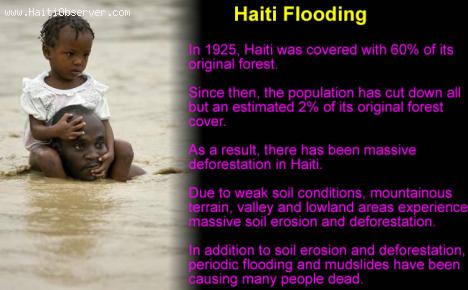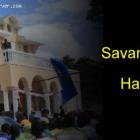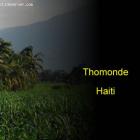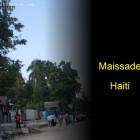ADVERTISEMENT
flood - Haiti Observer Blog
flood, Haiti Observer Blog. Read the following articles about flood
Port-A-Piment and The River That Runs Through
The town of Port-a-Piment in the Sud Department is one the municipalities where the Rivieres de Port a Piment goes through. There are about 13,900 people living in Port-a-Piment and they get affected when the river overflows. It is common for the river to cause floods during the rainy season. When it happens, the dirt roads become submerged, making it impossible for people to use them. Roads are often closed down when the river overflows.
It can be recalled that in 2011, two people were reported to have been swept away when the river overflowed. Around 70 families in the villages of Chantal and Corteaux were also affected by the disaster, which destroyed their homes. During that time, people were forced to relocate.
Insurance to Sell Disaster Coverage in Haiti
Haiti is subject to catastrophic earthquakes, violent hurricanes, and deluges of rain on an intermittent basis.
The amount of damage done by these natural disasters adds up to hundreds of millions of dollars. While in the U.S., a significant number of the population carries disaster insurance, in Haiti its population of 10 million carries virtually none. Data collected shows only 0.3 percent insured against disaster occurrences. To address the financial loss the island experiences every time a natural disaster hits, two agencies have proposed solutions.
The International Finance Corporation, division of the World Bank, is launching a $1.96 million initiative to insure 70,000 small business owners without adequate disaster coverage. Without insurance, business owners can't pay their accounts, because losses have devoured whatever capital left. And a low credit rating disqualifies them for loans necessary to get their businesses operating again.
What To Do After Floods Hit Farms And Crops
Haiti is still reeling from the impact of Hurricane Sandy, which damaged a large amount of crops and agriculture produce in the country. According to reports, floods covered almost the entire southern part of the country. This means that not only houses are affected but also crop and livestock farms. As a matter of fact, officials are now worried that losses in crop production can lead to food shortages.
Disasters such as floods are not uncommon in Haiti and this is the reason why people, particularly farmers, should always be prepared. However, it is not everytime that farmers have enough time to keep their farms safe from floods. In this case, one must know how to deal with the floods' effects on their farm goods.
Tips to maintain A Mold-Free Home After Flooding
Floods can cause mold in your home and it can be a big problem for you and your family. Keep in mind that mold is bad for the health. Those who have allergies and asthma will be put at greater risk if mold in your house is not removed immediately.
Health officials called on people whose homes were submerged in water to remove the mold in their properties. One can do this by cleaning every inch of the house, drying it out, and throwing away things that are infected by mold. It might be difficult for you to discard mold-infected items, especially of they are very personal and important to you, but it might be your only way of getting rid of the entire mold. Remember that mold and mildew usually grows in just a day. Moreover, they can stick to different parts of your home.
Diseases usually caused by Flooding
The Haiti government is now worried about the health effects of the recent flooding caused by Hurricane Sandy. Officials earlier aired concerns over possible outbreaks of cholera and other diseases. This is the reason why officials and charity organizations are focusing on the health of people affected by the floods, which killed dozens of people and damaged crops late last month.
Flooding can trigger an outbreak of communicable diseases. It increases the risk of transmitting the diseases from one person to another until an outbreak occurs. Unsanitary condition, which is often the result of flooding, also contributes to this risk.
Cap-Haitien, Limonade and Quartier-Morin flooded
On the night between Thursday, November 8 and Friday November 9, 2012 heavy rains poured for in the North Department causing lost of several lives as well as damages to homes and agriculture.
The cities and towns most affected include: Cap-Haïtien, Limonade and Quartier-Morin. It was also reported that some towns in Nippes Departments were affected. It include Baradères, de Fonds des Nègres, Miragoâne, Petit-Trou, Plaisance and L'Azile.
Video:
It has been reported that about 12 people became victim of the flood so far. This is e preliminary assessment. Most of the victims lived in the beds of ravines and were surprised by the flash floods. Several people were reported missing.
Hurricane Sandy Wreaks Damage on Already Fragile Haiti
Hurricane Sandy, an erratic and unpredictable tropic storm, roared through the Caribbean, lashing Cuba, Haiti, Jamaica, and The Bahamas. Continuing on its horrifying path of destruction, it barreled across South Florida and up into the eastern seaboard. It is predicted it will clash with an artic air mass racing southward from Canada. Another winter-storm system moving east is expected to cross paths with Hurricane
Sandy as well.
The unofficial death toll from Hurricane Sandy soared to 21 by Thursday. Haiti sustained the second highest number of dead, nine, behind Cuba, who has reported eleven dead. Jamaica has reported one death.
Bas Limbe, Second Most Important Town In Nord Department
Bas-Limbe is located in Haiti's Nord Department. After Cap Haitien it is the second most important one in the Nord Department. In the Arrondissement of Limbe, it is a municipality. From Bas-Limbe and Limbe, Cap Haitien is located at a 26 km distance. Port Margot is at 8 km and Port-au-Prince, the capital of Haiti is at 150 km distance. French colonialists and Haitian slave battled fiercely in Limbe town.
Main Occupation
Main occupation of this town is agriculture with the winding River Limbe passing through Bas-Limbe into the sea. Coffee, bananas, mangoes and other fruits are grown here with constant water supply from the river. Vast rice pads are grown close to the sea.
The Town of Arnaud, a Flood Survivor in Haiti
Arnaud, one of the smallest villages in Haiti, is part of the Anse a Veau Arrondissement in the Nippes Department. Its population numbers under 19,000 inhabitants. The village's smallness contributes to over-crowding, which makes living conditions more difficult. Arnaud is sub-divided into three communes: Baconnois-Barreau, Baquet, and Arnaud City Center. Arnaud has only recently been incorporated as a separate municipality, having been created from the town of Anse-a-Veau.
The main form of economic activity is farming. Farmers grow crops of coffee, rice, banana, lime, sugar cane, and cotton, which afford them a modest standard of living according to Haitian standards.
What is a Flood?
Flooding is the commonest type of disaster worldwide. Many people have lost their lives and property has been damaged by severe floods experienced across the world.
Flood is caused by accumulation of rain water on the earth surface due to poor water retention characteristics of the soil or because the amount of rain water exceeds the soil's ability to absorb water.
Floods occur mostly in arid areas during seasons of heavy rainfall. Other regions prone to floods are equatorial regions due to their long periods of monsoon rainfalls.
Our objective is to share with you news and information about Haiti and the people of Haiti. Traditions, habits and the way we were or grew are alive in this site. We highly recommend that you Subscribe to our Newsletter and also share with us some of the things that are memorable and made us unique people.


 The Town of Savanette, Haiti
The Town of Savanette, Haiti  Newsletter
Newsletter  Thomonde, Haiti
Thomonde, Haiti  Maissade, Haiti
Maissade, Haiti  Haitian Creole Translation
Haitian Creole Translation